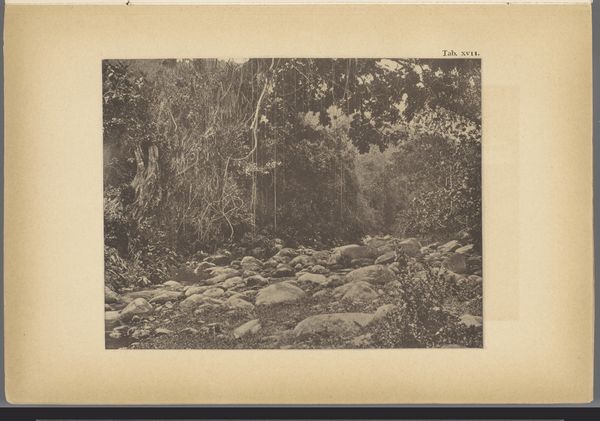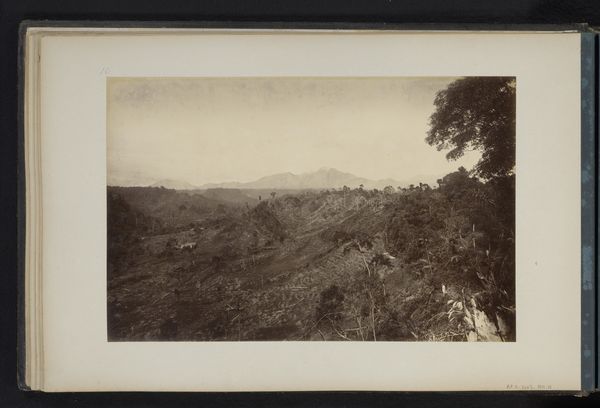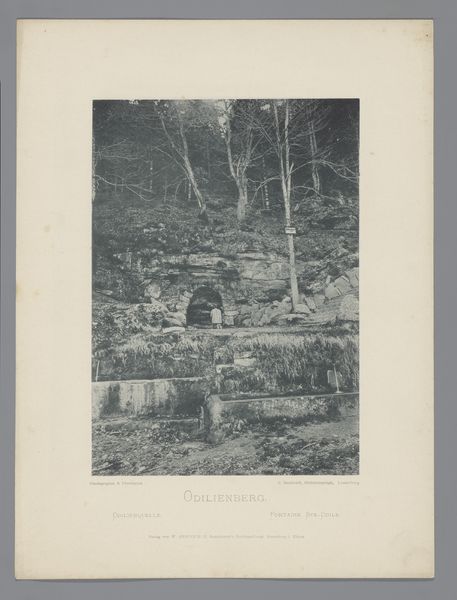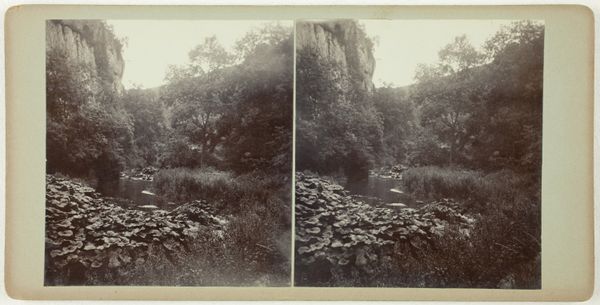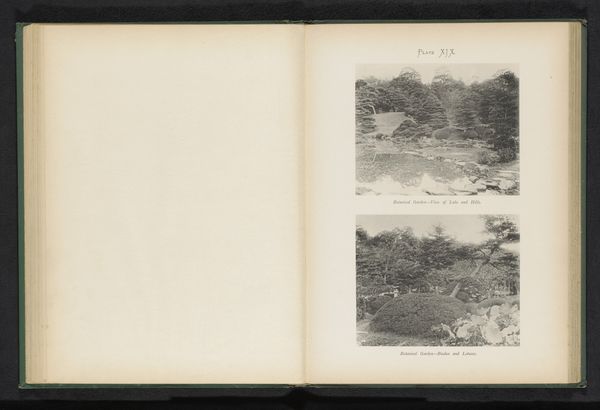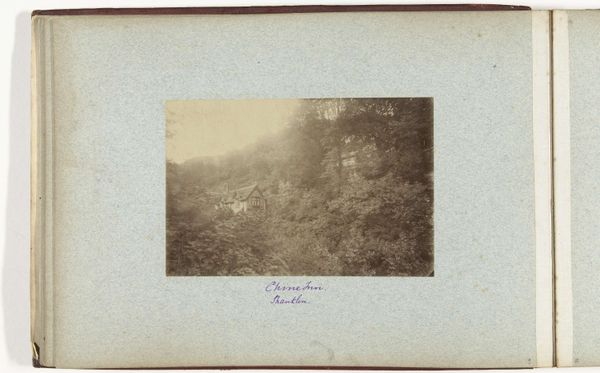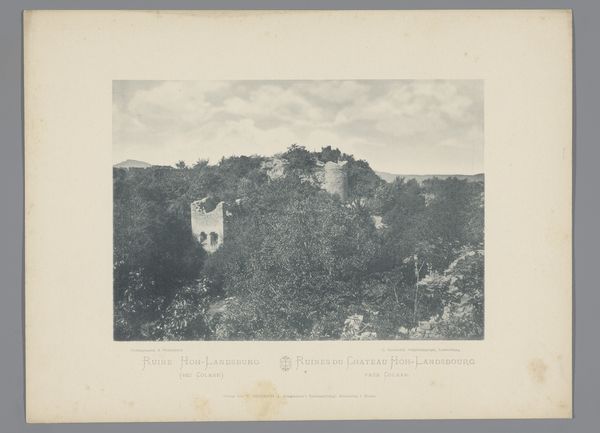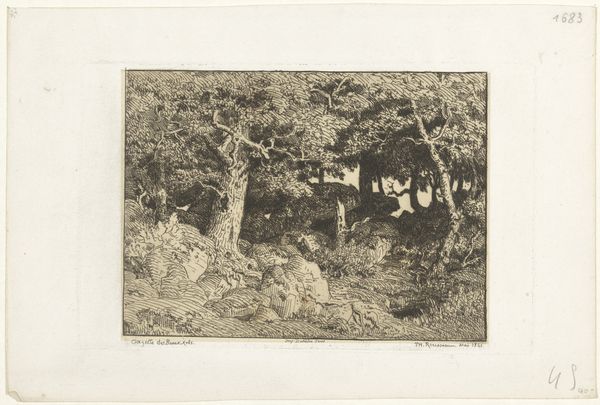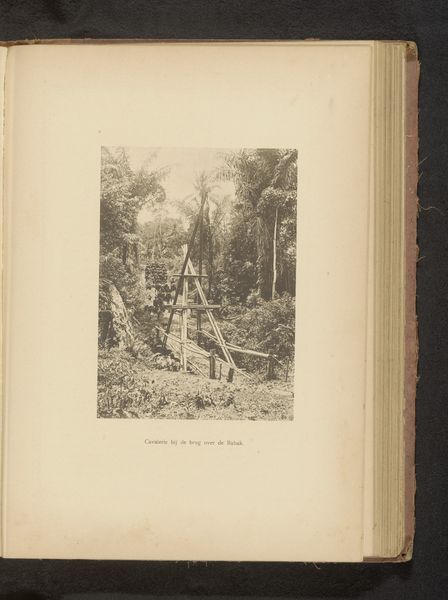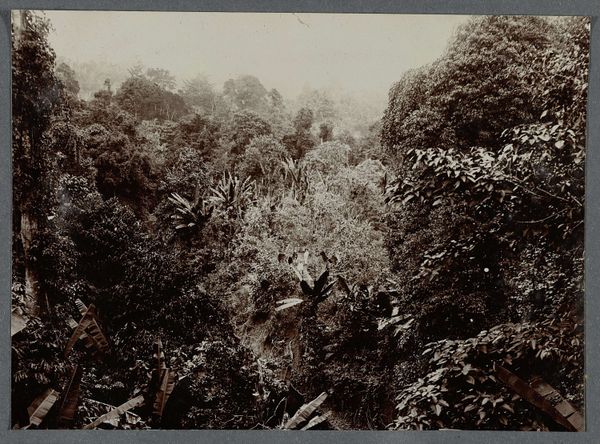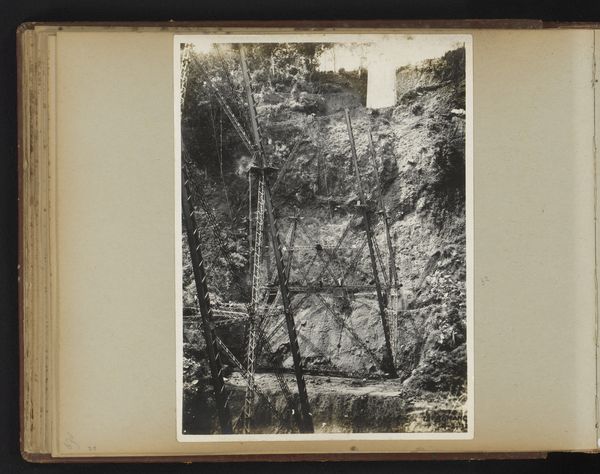
Drie mannen met een ezel in de kloof aan de voet van de Sint-Christoffelberg op Curaçao before 1887
0:00
0:00
gelatin-silver-print, photography, gelatin-silver-print
#
gelatin-silver-print
#
landscape
#
photography
#
gelatin-silver-print
Dimensions: height 138 mm, width 179 mm
Copyright: Rijks Museum: Open Domain
Editor: So, this is a gelatin-silver print from before 1887 by Jacobus Rudolphus Neervoort van de Poll, titled "Three men with a donkey in the gorge at the foot of Mount Christoffel in Curaçao." The monochromatic tones lend a very textured feel, almost tactile, but the figures seem small and somewhat overwhelmed by the landscape. How do you see it, in terms of form? Curator: Precisely. Observe the sharp contrasts in tonal value. The artist juxtaposes the detailed, craggy face of the rock formation against the relative smoothness of the sky. Note how the vertical thrust of the cacti contrasts against the horizontal layering of the rock. And the three men and the donkey: their positioning at the base anchors the composition, while their small size emphasizes the monumentality of the geological structure behind. Editor: I see what you mean about the monumentality. But is there a reason the photographer didn’t get closer, so we could see more details of their faces or dress? Curator: Consider the photographic process of the time. Extended exposure times favored static subjects. Also, I would suggest that van de Poll intended to emphasize the geological forms, framing the human element as a secondary feature within the greater landscape. Their small stature calls attention to the sheer scale and impressive physicality of the landscape itself, rendering humanity subservient to the natural world. Is that a fair interpretation, would you say? Editor: That makes a lot of sense when you explain the form that way. I appreciate your calling attention to the texture and the layering and even that small band of sky behind everything. It is starting to read like a very different photo to me now. Curator: The point is to see and decode the intentional structure within the picture, independent of social narrative. The arrangement itself gives us insight into a particular sensibility. Editor: I learned a lot about seeing how this piece works today. Thank you for opening my eyes to the balance between the natural elements and the people depicted.
Comments
No comments
Be the first to comment and join the conversation on the ultimate creative platform.
